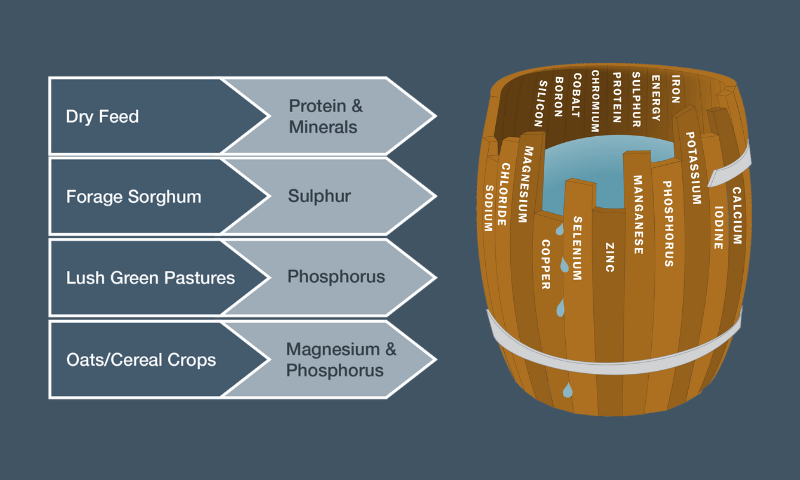The aim of livestock supplementation is to bridge the nutritional gap between what the pasture can supply and what the animal actually requires to maintain health, growth and reproduction. This is why the principle of the primary limiting nutrient is critical for a successful supplementation program.
Liebig’s Law of the Minimum states that growth is dictated not by total resources available, but by the scarcest resource (limiting factor). For example, the performance of an animal is restricted by the availability of the most limiting nutrient and the provision of nutrients other than the primary limiting nutrient will have little to no effect on stock performance.
Liebig’s barrel has been used by scientists for years to visually explain this law of the minimum. Imagine a barrel with unequal staves and how, if you were to fill that barrel with water, the capacity would be limited by the shortest stave.
Supplementation must therefore be aimed at supplying livestock with the most limiting nutrient as well as any others closely following that nutrient.
For example, cattle grazing country that is deficient in phosphorus will respond better to targeted phosphorus supplements during the green season when protein and energy needs are adequate. During drought conditions or for frost affected pasture when fodder is dry, providing there is sufficient forage, protein and then broad spectrum minerals will become the primary limiting factor.
Depending on the season and pasture type, the following provides a basic guide to limiting nutrients and MegaMin products that are formulated to meet the specific needs of livestock grazing these pastures.
